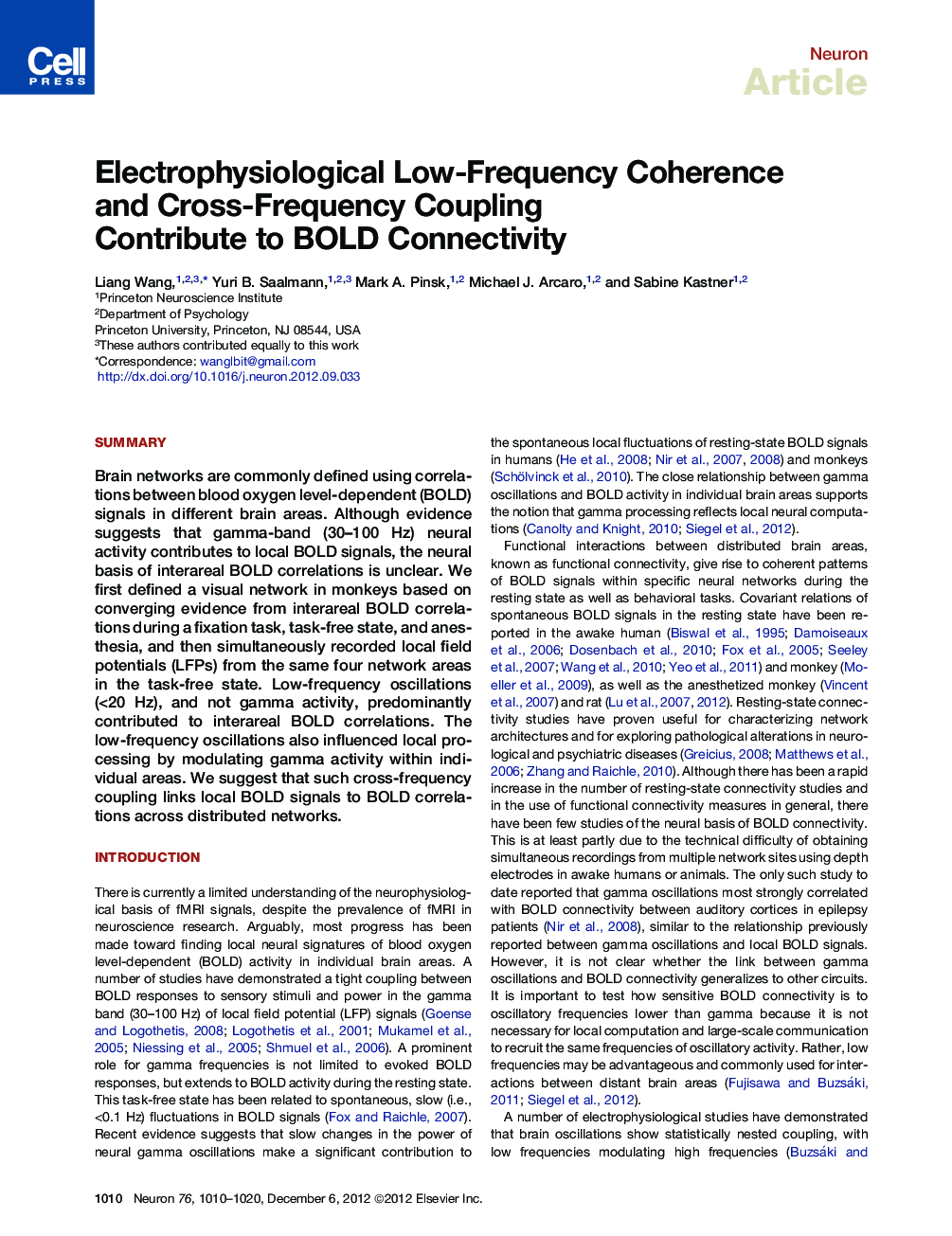| Article ID | Journal | Published Year | Pages | File Type |
|---|---|---|---|---|
| 4321598 | Neuron | 2012 | 11 Pages |
SummaryBrain networks are commonly defined using correlations between blood oxygen level-dependent (BOLD) signals in different brain areas. Although evidence suggests that gamma-band (30–100 Hz) neural activity contributes to local BOLD signals, the neural basis of interareal BOLD correlations is unclear. We first defined a visual network in monkeys based on converging evidence from interareal BOLD correlations during a fixation task, task-free state, and anesthesia, and then simultaneously recorded local field potentials (LFPs) from the same four network areas in the task-free state. Low-frequency oscillations (<20 Hz), and not gamma activity, predominantly contributed to interareal BOLD correlations. The low-frequency oscillations also influenced local processing by modulating gamma activity within individual areas. We suggest that such cross-frequency coupling links local BOLD signals to BOLD correlations across distributed networks.
► Simultaneous multiple-electrode recordings from a thalamo-cortical network ► Low-frequency neural oscillations contributed to interareal BOLD correlations ► Low-frequency oscillations modulated local gamma-frequency neural activity ► Cross-frequency coupling linked local BOLD activations to BOLD connectivity
